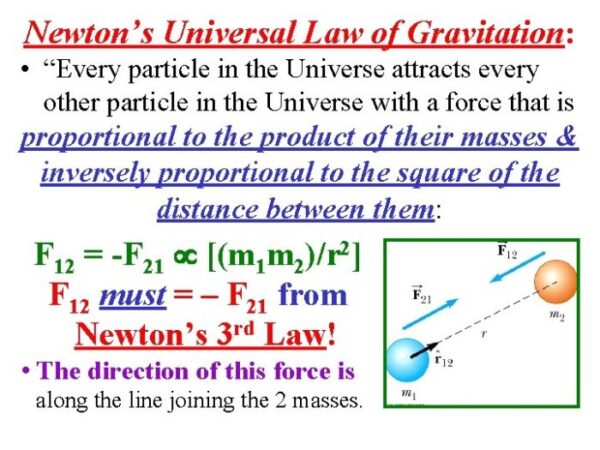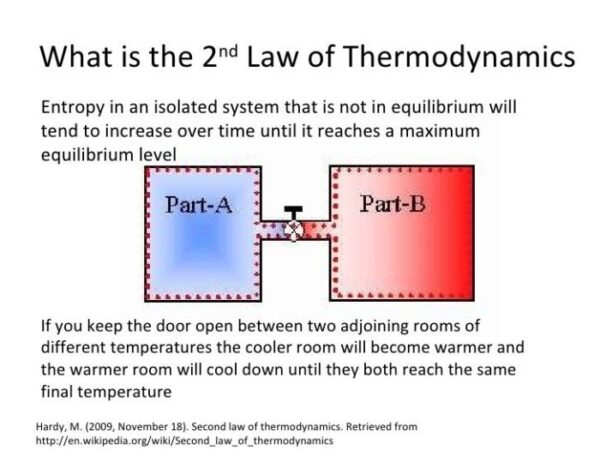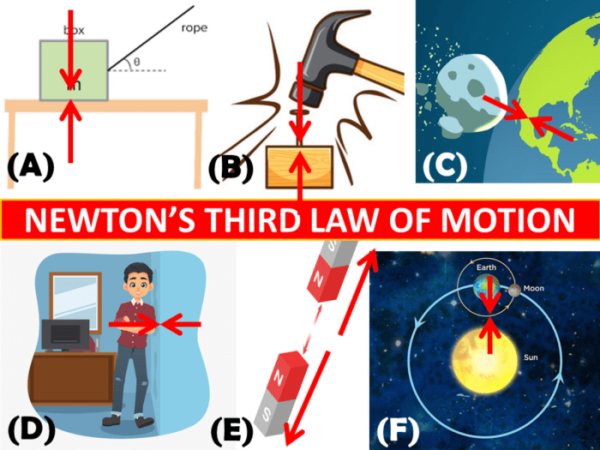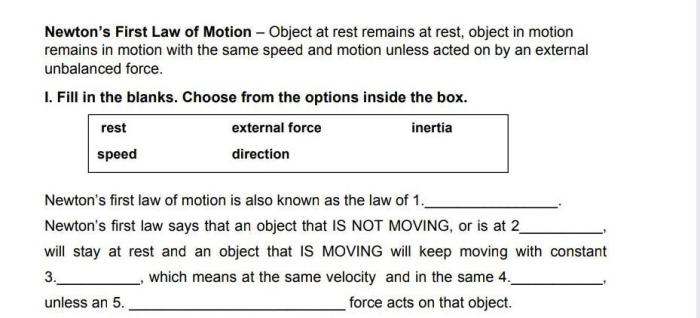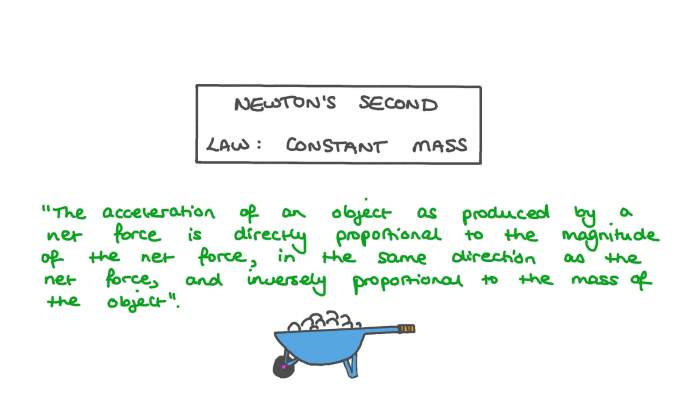
What is the law of universal gravitation? This fundamental principle, discovered by Isaac Newton, governs the attraction between any two objects with mass. It explains why apples fall to the ground, why the moon orbits the Earth, and how galaxies are held together. Imagine a force that reaches across vast distances, pulling everything in the universe towards each other – that’s the power of gravity.
The law states that the force of gravity is directly proportional to the product of the masses of the two objects and inversely proportional to the square of the distance between their centers. This means that the more massive the objects, the stronger the gravitational force between them. Conversely, the farther apart the objects are, the weaker the gravitational force.
Introduction to Universal Gravitation
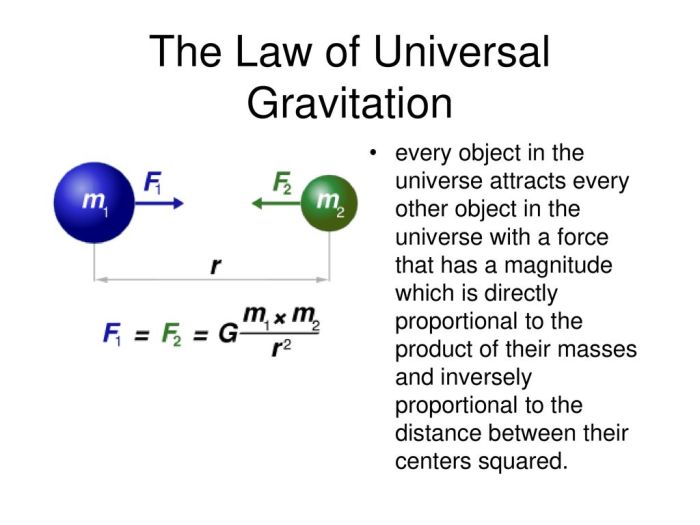
Every object in the universe attracts every other object. This seemingly simple statement is the foundation of a fundamental force in nature: universal gravitation. It’s the force that keeps us grounded, governs the orbits of planets, and shapes the structure of galaxies.
Universal gravitation is a force of attraction between any two objects with mass. The strength of this force depends on the mass of the objects and the distance between them. The greater the mass, the stronger the gravitational pull. Conversely, the farther apart the objects are, the weaker the force.
History of Universal Gravitation
The concept of gravity has been around for centuries. Ancient philosophers like Aristotle observed objects falling to the ground and theorized about the nature of this force. However, it was Isaac Newton, in the 17th century, who revolutionized our understanding of gravity.
Newton, through his observations of the moon’s orbit around the Earth and the motion of the planets, formulated the Law of Universal Gravitation. He realized that the same force that pulls an apple to the ground also keeps the moon in orbit around the Earth.
Newton’s law states that every particle in the universe attracts every other particle with a force that is proportional to the product of their masses and inversely proportional to the square of the distance between their centers. This law, expressed mathematically as:
F = G * (m1 * m2) / r^2
where:
* F is the force of gravity
* G is the gravitational constant (6.674 x 10^-11 N m^2/kg^2)
* m1 and m2 are the masses of the two objects
* r is the distance between their centers
This law was a groundbreaking discovery, unifying celestial and terrestrial phenomena under one universal principle.
Examples of Universal Gravitation
The effects of gravity are evident all around us. Here are some examples:
* Falling Objects: When you drop an object, it falls to the ground because of the gravitational attraction between the object and the Earth. The greater the mass of the object, the stronger the force of gravity acting on it.
* Tides: The tides are caused by the gravitational pull of the Moon and the Sun on the Earth’s oceans. The Moon’s gravitational pull is stronger on the side of the Earth facing the Moon, causing the water to bulge out. This bulge creates high tides. On the opposite side of the Earth, the gravitational pull is weaker, leading to a lower water level and low tides.
* Planetary Orbits: The planets in our solar system orbit the Sun due to the Sun’s gravitational pull. The planets’ orbits are not perfectly circular but elliptical, with the Sun at one focus of the ellipse. The speed of the planets in their orbits varies, with the planets moving faster when they are closer to the Sun and slower when they are farther away.
The Law of Universal Gravitation Explained
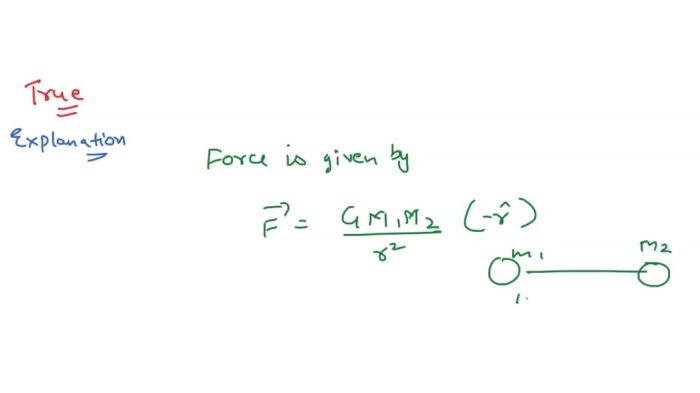
The law of universal gravitation, formulated by Sir Isaac Newton, describes the force of attraction between any two objects with mass. This fundamental law governs the motion of planets, stars, and galaxies, and even explains why objects fall to the ground.
The Mathematical Formula of the Law
The law of universal gravitation can be expressed mathematically as follows:
F = G * (m1 * m2) / r^2
This formula states that the force of gravity (F) between two objects is directly proportional to the product of their masses (m1 and m2) and inversely proportional to the square of the distance (r) between their centers.
- Mass (m1, m2): Mass is a fundamental property of matter, representing the amount of matter in an object. The more massive an object, the stronger its gravitational pull.
- Distance (r): The distance between the centers of the two objects is crucial. As the distance increases, the gravitational force between them weakens rapidly.
- Gravitational Constant (G): The gravitational constant is a fundamental constant of nature, denoted by the letter G. It has a value of approximately 6.674 × 10^-11 N⋅m^2/kg^2. This constant ensures that the force of gravity is always consistent, regardless of the size or location of the objects.
The Inverse Square Relationship
The inverse square relationship between gravitational force and distance is a key aspect of the law. This means that if you double the distance between two objects, the gravitational force between them decreases by a factor of four. Similarly, if you triple the distance, the force decreases by a factor of nine. This relationship explains why the gravitational force weakens significantly as objects move further apart.
Significance of the Gravitational Constant
The gravitational constant (G) plays a crucial role in the formula. It is a fundamental constant of nature, meaning it is the same everywhere in the universe. The value of G is extremely small, which explains why the force of gravity is relatively weak compared to other fundamental forces, such as the electromagnetic force. However, its significance lies in its universal nature, ensuring that the force of gravity is consistent and predictable, regardless of the objects involved.
Applications of Universal Gravitation
The law of universal gravitation, as we have seen, describes the fundamental force that governs the interactions between objects with mass. This force, though seemingly weak at everyday scales, has profound implications for the universe at large, shaping the movements of celestial bodies, the formation of galaxies, and even influencing our lives here on Earth. Let’s delve into some of the most significant applications of this universal law.
Celestial Motion, What is the law of universal gravitation
Universal gravitation is the primary force responsible for the motion of celestial bodies, including planets, stars, and galaxies. The gravitational attraction between these massive objects determines their orbits, their interactions, and even their evolution.
Planets, for instance, are held in their orbits around stars due to the gravitational pull of the star. The strength of this pull depends on the masses of both the star and the planet, as well as the distance between them. The farther a planet is from its star, the weaker the gravitational force, and the longer it takes to complete an orbit. This is why planets in our solar system, like Mercury and Venus, orbit the sun much faster than planets like Jupiter and Saturn.
Stars themselves are also subject to gravitational forces. In a galaxy, stars are bound together by their mutual gravitational attraction, forming a system that rotates and evolves over time. The distribution of matter within a galaxy influences its gravitational field, and this field, in turn, shapes the movement of stars and gas within the galaxy. The gravitational interactions between stars can lead to the formation of star clusters, binary star systems, and even supermassive black holes at the centers of galaxies.
Formation of Galaxies and Solar Systems
Gravity plays a crucial role in the formation of both galaxies and solar systems. In the early universe, matter was distributed relatively evenly. However, slight density fluctuations caused regions of slightly higher density to exert a stronger gravitational pull on surrounding matter. Over time, these denser regions attracted more matter, leading to the formation of massive clouds of gas and dust. These clouds, under their own gravity, began to collapse, forming galaxies and, within galaxies, solar systems.
The collapse of these clouds was not uniform. As the clouds contracted, they spun faster, and this rotation led to the formation of a disk-like structure. Within this disk, gravitational interactions between particles caused clumps of matter to coalesce, forming stars and planets. The planets, in turn, were influenced by the gravitational pull of the star and other planets, leading to their eventual arrangement in a solar system.
Practical Applications on Earth
While the effects of gravity on celestial bodies are awe-inspiring, the law of universal gravitation also has practical applications here on Earth. Here are some notable examples:
- Tides: The gravitational pull of the moon and, to a lesser extent, the sun, causes the tides on Earth. The moon’s gravity pulls the water on the side of the Earth facing it, creating a bulge of water known as a high tide. On the opposite side of the Earth, the moon’s gravitational pull is weaker, resulting in a low tide. As the Earth rotates, these high and low tides move around the planet, creating the familiar tidal cycles.
- Stability of Structures: Gravity plays a crucial role in the stability of structures on Earth. Buildings, bridges, and other structures are designed to withstand the forces of gravity, ensuring they remain upright and safe. Engineers consider the weight of materials, the distribution of load, and the strength of materials to ensure that structures can support their own weight and any additional loads they may experience.
- Satellite Orbits: Satellites, including those used for communication, navigation, and weather forecasting, are launched into orbit around the Earth. The orbit of a satellite is determined by the balance between its velocity and the gravitational pull of the Earth. A satellite in a stable orbit will maintain a constant distance from the Earth, allowing it to perform its designated tasks.
The Universal Nature of Gravity

Gravity, as defined by Newton’s law of universal gravitation, is a fundamental force that governs the interactions between all objects possessing mass. This universal nature of gravity implies that every object in the universe, regardless of its size or composition, experiences a gravitational pull towards every other object. This force is responsible for the Earth’s orbit around the Sun, the formation of galaxies, and even the simple act of dropping an apple to the ground.
Gravitational Fields
The concept of gravitational fields helps to visualize and understand the influence of gravity. Every object with mass creates a gravitational field around itself, which extends outwards indefinitely, albeit with decreasing strength as distance increases. This field exerts a force on any other object that enters it, pulling it towards the source of the field. The strength of the gravitational field is directly proportional to the mass of the object creating it. This means that more massive objects have stronger gravitational fields.
Interactions with Other Forces
Gravity is not the only force acting in the universe. It interacts with other fundamental forces, such as electromagnetism, to influence the behavior of objects. For instance, the interaction between gravity and electromagnetism is crucial for the stability of stars. Electromagnetic forces within stars counteract the inward pull of gravity, preventing the star from collapsing under its own weight. The balance between these forces determines the life cycle of a star and its ultimate fate.
Beyond Newton’s Law
While Newton’s law of universal gravitation successfully explained many aspects of gravity, it has limitations, particularly when dealing with very strong gravitational fields or extreme speeds. These limitations led to the development of Einstein’s theory of general relativity, which provides a more comprehensive understanding of gravity.
Einstein’s Theory of General Relativity
Einstein’s theory of general relativity revolutionized our understanding of gravity by proposing that gravity is not a force, but a curvature of spacetime caused by the presence of mass and energy. This curvature affects the motion of objects, causing them to follow curved paths, which we perceive as gravity.
Einstein’s theory makes several key predictions that have been confirmed by observations, including:
- The bending of light around massive objects, such as stars and galaxies.
- The gravitational redshift of light, which means that light emitted from a strong gravitational field will have its wavelength stretched.
- The precession of the perihelion of Mercury, which is the slow rotation of the orbit of Mercury around the Sun.
Ongoing Research and Advancements
Despite the success of general relativity, there are still many unanswered questions about gravity. For example, we do not fully understand the nature of dark matter and dark energy, which are thought to make up the majority of the universe’s mass and energy. Additionally, there are inconsistencies between general relativity and quantum mechanics, the theory that describes the behavior of particles at the atomic and subatomic level.
Current research in gravity is focused on addressing these challenges. Scientists are working on developing new theories that can unify general relativity and quantum mechanics, as well as exploring the nature of dark matter and dark energy. These advancements will help us understand the universe at a deeper level and potentially lead to new technologies.
Closing Notes: What Is The Law Of Universal Gravitation
From the falling apple to the swirling galaxies, the law of universal gravitation weaves a tapestry of interconnectedness throughout the universe. While Newton’s law provides a powerful framework for understanding gravity, it has limitations, particularly in extreme scenarios. Einstein’s theory of general relativity offers a deeper understanding of gravity, explaining its intricate relationship with spacetime. As we continue to explore the universe, our understanding of gravity will continue to evolve, revealing the secrets of this fundamental force that shapes our existence.
FAQ Section
What is the gravitational constant?
The gravitational constant, denoted by ‘G’, is a fundamental constant that quantifies the strength of the gravitational force. It is approximately 6.674 x 10^-11 m^3 kg^-1 s^-2.
Does gravity affect light?
Yes, gravity affects light. This is known as gravitational lensing, where the path of light is bent by the presence of a massive object. This phenomenon was predicted by Einstein’s theory of general relativity and has been observed in various astronomical settings.
What is the difference between weight and mass?
Mass is a fundamental property of an object, representing the amount of matter it contains. Weight, on the other hand, is the force exerted on an object due to gravity. It depends on both the object’s mass and the gravitational field it experiences.
